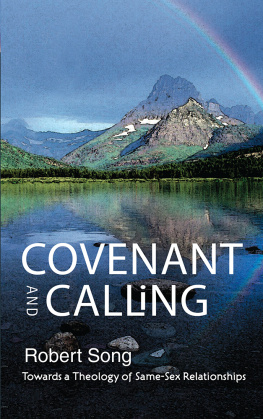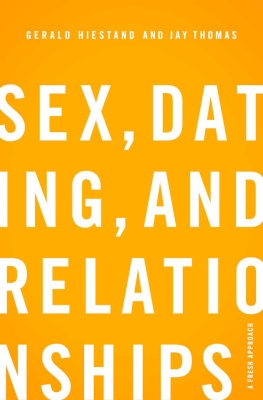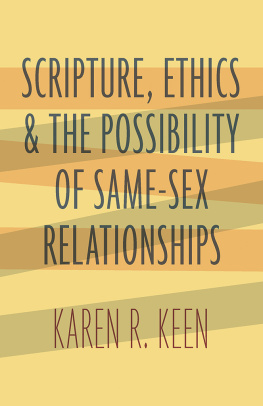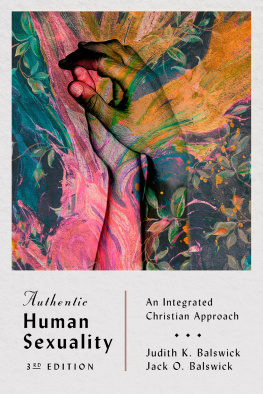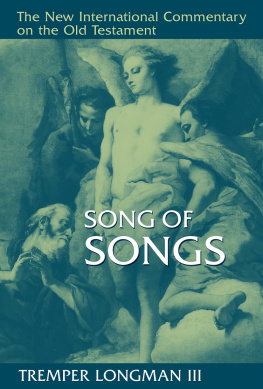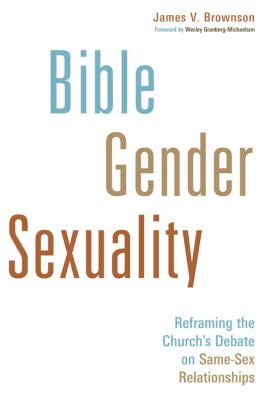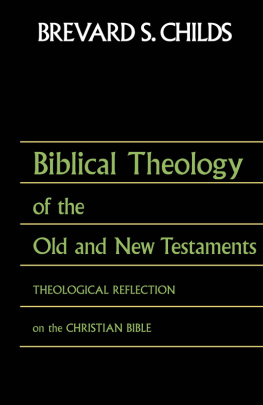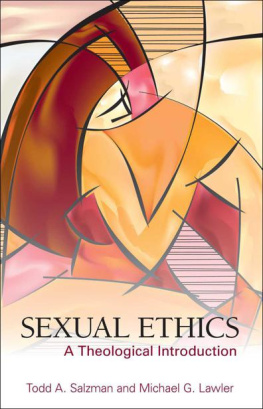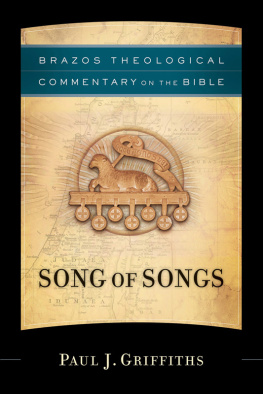Preface
This is not the first book on the subject of theology and sexual relationships, and short of an asteroid incinerating the biosphere or the Lord returning in a way more spectacular than Anglicans are used to expecting, it will not be the last. It is written at a time widely thought to be one of crisis for the churches, a time when they are persistently threatened by the prospect of schism over matters of sexuality, but when renewed efforts are also being made to defuse tensions by calling on participants on all sides to lay down arms and enter into talks.
My aim is to make a contribution to these conversations, not by providing a detached overview of the issues, but by seeking to explore what potential there might be for taking the discussion forward, in a way that is both fully responsive to the tradition of Christian teaching and liturgical practice, and yet willing to entertain the possibility that we still have more to learn. In particular, I want to ask not so much about sexuality as about the relationships within which sexuality is expressed. Historically the churches have recognized two vocations, marriage and celibacy. Marriage has been understood as the lifelong and exclusive commitment to one another of a man and a woman, the only appropriate context for sexual relationship. Celibacy or at least sexual abstinence has been regarded as the proper and only legitimate alternative. The question I want to investigate is whether these really represent the sole alternatives, or whether we could draw from within the terms of the tradition the lineaments of another, third vocation. Might it be possible to conceive of another kind of calling, one that arises out of the heart not only of Christian understandings of marriage and celibacy, but also of what these tell us about our created, bodily natures and our hope in Christ?
There has of course been no shortage of defences of same-sex relationships, appealing to models of lesbian or gay friendship, of quasi-marital same-sex union, or of equal marriage, from which there is a great deal to learn. But many of them convey a sense of not having really done full justice to the thick texture of Christian thinking about sexuality. This is not so much a matter of how they handle scriptural texts in the area though that remains a standing question as a failure to deal adequately with the fact that fundamental to Christian understandings of marriage throughout the centuries has been the assumption that it is a creation good, and consequently intrinsically open to procreation. The other goods and virtues of marriage, such as its commitments to faithfulness and permanence, are frequently assumed to be separable in principle from procreativity, but without a really compelling theological justification. The rich Christian narrative of creation and redemption, which I will argue might provide a fuller theological rationale and point the way to such a separation, never properly comes into view.
Interestingly, a parallel kind of failure to place ourselves within the Christian theological narrative can be discerned behind many more conservative accounts of marriage and sexuality. While they may claim, and not without cause, to be closer to the surface meaning of many pertinent biblical texts, and may also rightly sustain the sense of marriage as a created good, they frequently forget that according to the Christian narrative of the redemption of the world in Christ the Church has no ultimate stake in the propagation of the species or the indefinite continuation of society outside of Christ. The survival of the human species and the perpetuation of this world order are not independent goods to which Christians whose identity is rooted in the resurrection have to pay obeisance, but are themselves relativized by Christ, who alone is the substance of Christian hope. And this cannot but affect our understanding of sexuality.
In both cases the decisive failure is one of not recognizing the significance of the advent of Christ for sexuality. Sex bc is not the same as sex ad . Before Christ, marriage as a good of creation was inseparable from procreation; but after Christ, while marriage and procreation do not stop being goods, we are also directed to a future resurrection life in which marriage and procreation will be no more. The vocation of celibacy is the first sign of this resurrection life, witnessing as it does to a time when God will be known as the fulfilment of all our desires. The question is whether this time between the times in which we live, between Christs resurrection and his return in glory, also admits of another calling. Is there space for another kind of vocational structure, a structure of relationship, which might also be an appropriate way of inhabiting this theological time between the times? Could such a relationship be sexually expressed? And what would sexuality signify in such circumstances?
In the chapters that follow, I will explore the arguments for such a third vocation, which I will call covenant partnership. The decisive feature that distinguishes this proposal from many other similar defences of same-sex partnerships is that it is rooted in the eschatological character of the time we indwell, that is, the time when in Christ the ultimate destiny of the creation has been revealed, but when it has yet to be fulfilled in our experience. A result of this, so I shall argue, is that covenant partnerships would in principle include not only same-sex relationships and relationships involving transsexuals or people with intersex conditions, but also opposite-sex relationships. One of the assumptions that tends to stand unquestioned is that the primary theological problem with same-sex sexual relationships is that they are same-sex. I argue by contrast that the fundamental division is not between heterosexual and homosexual relationships, but between procreative and non-procreative relationships. Covenant partnerships are different from the created good of procreative marriage precisely because they are not procreative: by which is meant not that they could never involve bringing up children, but that children would not be the direct result of the couples sexual relationship. Whether and under what circumstances covenant partnerships might involve the nurturing and raising of children involves a wide range of considerations, which I do not address in this book.
In exploring the case for covenant partnerships, there are three paths I have tried not to follow. First, although the book reaches towards conclusions that differ from those that historic Christianity has generally arrived at, it is not programmatically liberal. I do not take as axiomatic certain methodological approaches or normative commitments that are typically associated with more liberal or radical styles of theology. I do not for example argue for a principled methodological privileging of experience over Scripture, tradition or reason, nor do I interpret reason as a realm of self-grounded truth standing autonomously over against Scripture or tradition. One of the many results of the current predicament over gender and sexuality within the churches has been what can only be described as an increasing fear of Scripture in some quarters, and a consequent anxiety about teaching, preaching or learning from it a situation that over time could become debilitating for Christian witness. If the Christian Church has anything to say to the world at all, it must be grounded in what it has learned of God through Jesus Christ; and what it knows of Jesus Christ it knows in the first place by attending to the witness of the apostles who proclaimed him and the prophets who foretold him. Subsequent church tradition in the form of the canons, creeds and councils of official teaching, or in the writings of theologians, ecclesiastical, learned or lay gains its authority to the extent that it is able to be illuminated by, and therefore in response to shed light on, that primary witness and the one to whom it points. And this cannot but make central the work of seeking to understand Scripture.

